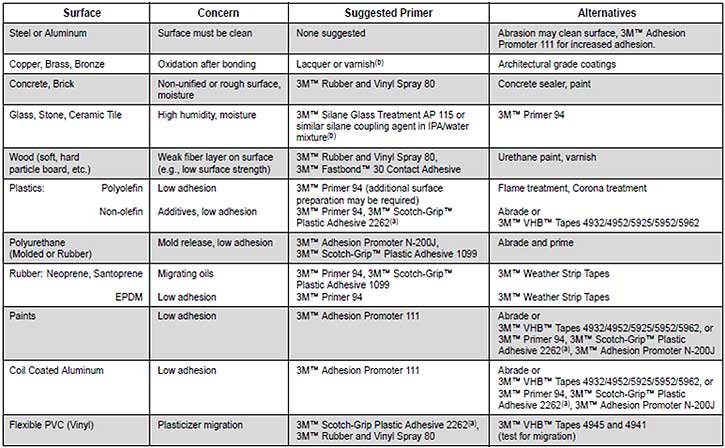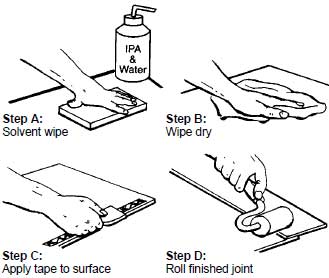No matter how robust your adhesive is, or how well-suited it is to your application, a poorly prepared surface will negate the strongest adhesive. To ensure a strong bond, surface preparation is the key to success.
The Standard
In the majority of situations, a good scrub with a 50:50 mixture of isopropyl alcohol (IPA) and water will do the job. The alcohol will dissolve light grease and water will get rid of dirt and accumulated dust. Make sure the surface is thoroughly dry before applying the adhesive tape. Try not to touch the cleaned surface as finger oils and other contaminants may affect the bond.
The Exceptions
While the IPA/water mixture is sufficient in the majority of cases, there are exceptions.
Remove Heavy Oils: Use a degreaser or solvent-based cleaner. 3M™ Prep Solvent 70, 3M™ Citrus Base Cleaner, mineral spirits, naphtha or similar solvents will cut the heavier-weight oils. Follow up with the IPA/Water mixture until the oil is gone.
Abrade the Surface: Roughing up the surface (i.e. sanding) will loosen up any accumulated dirt, rust, or chipped paint. It will aid in the adhesion to painted surfaces or plastic items. A finely- abraded surface with shallow scratches created by a circular motion (rather than straight lines) has the best potential for a strong and persistent bond. This method can create up to a 40% increase in surface area and can result in greater immediate and long-term bonding potential. Scrub pads, fine steel wool, or sand paper can achieve the right level of abrasion. A palm sander could be helpful for larger jobs. Avoid using coarse abrasive materials because a too-rough substrate may inhibit the adhesive flow onto the surface. Always clean with the IPA/Water solution, or other solvent, and make sure all loose particles are removed. While it is not typical, some high-bond tapes adhere best to smooth, glassy surfaces, so double check with the manufacturer before you abrade the surface and compromise the bond strength.
Promote Adhesion: Priming a low surface energy substrate (e.g. a plastic or painted surface) or a surface coated with an adhesion-impeding chemical, will significantly increase the immediate bond as well as the persistence of the join over time. A primer layer can also block any elements of the substrate from migrating out over time, and eroding the bond.

Seal Porous Surfaces: Porous or fibrous materials (wood, concrete, particle board, etc.) will need to be sealed to achieve a uniform surface for maximum bond. Common sealing materials include paint, varnish or other hard surface coatings such as epoxies.
Dealing with Unique Materials: Glass, stone, and ceramic, or other siliceous materials attract and hold water naturally. Without a sealant, exposure to moisture or high humidity will likely degrade the pressure sensitive adhesive tape bond. Silane coupling agents, added to the IPA/water cleaner can help condition the surface and reduce the hydrophilic (water-loving) properties of the surface. This will safeguard the adhesive bond in high moisture environments.
Copper and copper-containing alloys (brass, bronze) are prone
to oxidation even under the adhesive tape. Coating the surface with a lacquer or varnish will seal the surface and prevent rust from forming under the tape. Be sure to test the tape bond to verify a strong bond.

Be sure to obtain and read the Material Safety Data Sheets for any primer product you use. Follow all instructions.
